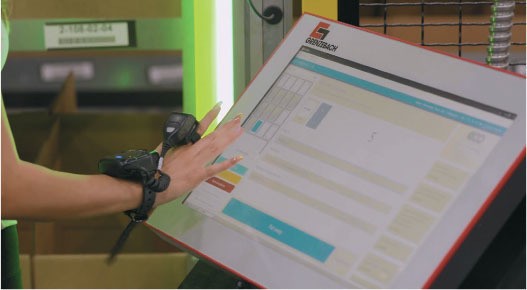
Click here to read the full article in the digital version of MHI Solutions.
A lot is happening and changing in mobile automation, with emerging technologies bringing even greater value to warehouse managers and new products coming to market that are revolutionizing how mobile automation is viewed and being incorporated. The changes pertain to MHI’s Industry Group, Automated Guided Vehicle Systems, as well, which has a direct connection to this area of the material handling industry. The group was recently renamed the Mobile Automation Group, or MAG.
The group changed its name because AGVS doesn’t fully explain the entire industry—the group wanted to also include larger autonomous mobile robots, including forklifts, trucks and shuttle systems, said Seth Carlson, industry specialist, material handling and logistics at MHI member Banner Engineering Corp.
“The industry is increasingly growing, and now there are a lot of companies out there that are either robotic providers or component providers,” Carlson said. “Just a few short years ago it was unique to see a mobile robot in a warehouse, but it’s not so unique anymore. Mobile robots are becoming more commonplace, including in older facilities.”

Designing a new warehouse around robots is one thing but incorporating a guided vehicle around an older warehouse “is a whole other issue,” he said. There are a lot more components to focus on, including aesthetics and lighting. Designers have to make sure the vehicle is communicating to the warehouse management system in real time, so that the status—or “the voice” of the robot—is constantly known throughout the building and can function around the human workers in the facility. It’s also important to add lighting to give the robot a “visual voice.”
“The use of robotics is growing so much because of the labor shortage,” Carlson said. “It’s a lot more efficient to run a mobile automation bot in a warehouse; you can replace five FTEs with one bot. With turnover so high, the cost to maintain human workers is also high, but warehouses can reduce that cost by adding mobile automation.”
Emerging technologies have been able to increase connectivity with mobile automated products, which now can acquire data for “actionable decisions” from all areas within the warehouse, including areas where the products were not able to acquire data in the past, he said. For example, bots on a conveyor or a crane have their own source of data, but in the past, there was no way to aggregate all of the sources to see how they relate together. Now there’s new technology that allows data to be pulled into one place, to be transmitted to the warehouse management system.
Sensors, which also continue to evolve, “are critical to making sure bots do their job,” Carlson said. “They have to work faster, more efficiently and they have to fit into tighter spaces, so they have to have the right form factor. They have to respond and turn and help make actionable decisions efficiently.”
Click here to read the full article in the digital version of MHI Solutions.
 MHI Solutions Improving Supply Chain Performance
MHI Solutions Improving Supply Chain Performance